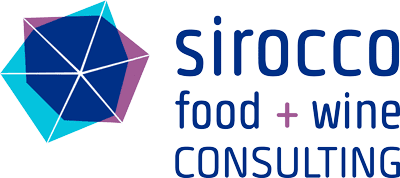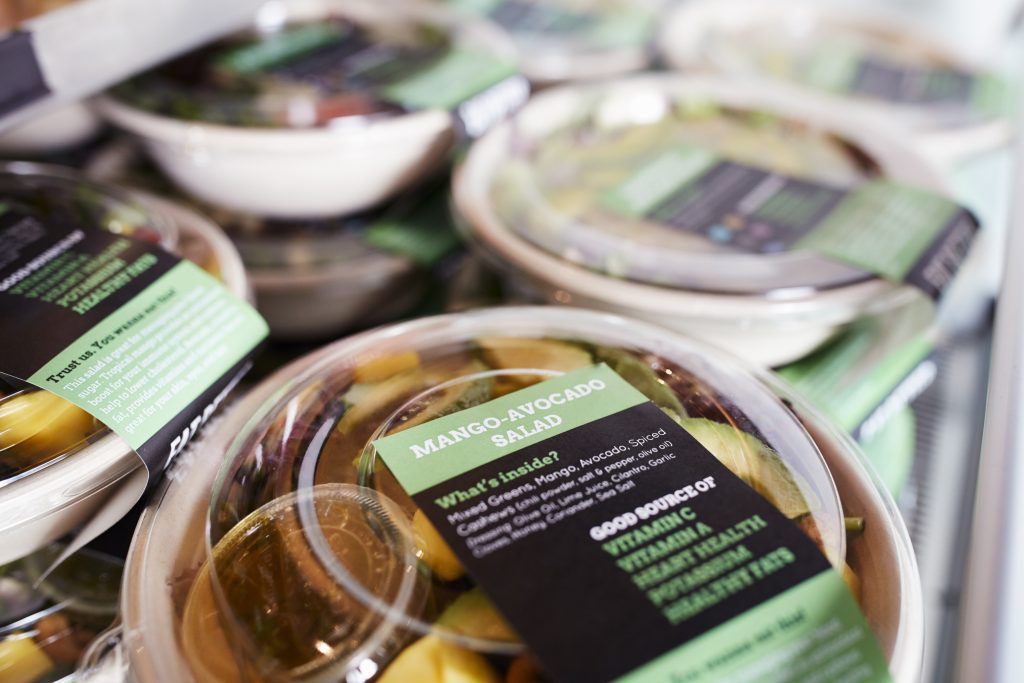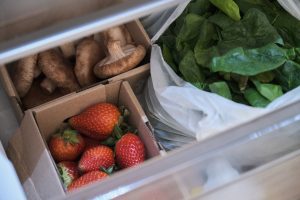What food is recalled in Canada and in the United States?
In recent years, food recalls have been on the rise. Improved detection tools, regulatory oversight, consumer awareness, international supply chains, rising number of food allergies are some of the factors influencing the number of recall incidents.
According to the CFIA recall page, the Canadian Food Inspection Agency oversees around 160 food recall incidents a year. These incidents include secondary recalls. The total annual number of Canada food recalls since 2021 was 250.
Canadian food agency recalls are voluntary and must be performed by food businesses with oversight from the CFIA. The Canadian government has the power to order mandatory recalls if the risk to public health is high and if the food business is unable or refuses to initiate the recall.
For the period 2023-2024, a total of 189 CFIA food recall incidents were recorded. The breakdown was as follows:
- 32.8% of recall incidents were due to microbiological hazards.
- 27% of recall incidents were due to allergen cross contact.
- 15.3% of recall incidents pertained to non-permitted ingredients, nutrition concerns and potential tampering.
- 14.8% of recall incidents were due to chemical hazards.
- 10% of recall incidents were linked to Hazardous Extraneous Materials (Physical hazards). Last December, McCain brand potato products were recalled due to pieces of metal.
The 2023-2024 period saw a large increase in the presence of chemical hazards in food as well as “other hazards”. Microbiological and Allergen hazards have remained high on the list. While the large part of these recalls was classified as Class 2 (moderate risk that consuming the food may lead to short-term or non-life-threatening health problems), CFIA food recall statistics nonetheless suggest that food imports to Canada may be at greater risk of contamination and tampering. Food importers and manufacturers must carefully review their supplier program to ensure that risk assessments are updated to reflect this fact. Food defense programs, food and vehicle inspections at receiving and supplier approvals constitute key programs that sites must maintain to ensure food safety.
In the United States, the FDA food safety dashboards returned the following graphed data for imported food recalls (Foreign Supplier Verification Program regulations) in 2024.
US FDA’s latest Import Alerts for 2025 include food contaminated as a result of fraud (contamination for economic gain). US importers must maintain FSVP plans. FSVP risk assessments must be reviewed by a Qualified Individual (QI) under FSMA regulations.
Recent Food Recalls
 Publicized recalls in the United States have included Boar’s Head deli meats linked to nine deaths and 57 hospitalizations across 18 states. Pathogenic listeria contamination was found to be the cause of this Ready-to-Eat meat recall.
Publicized recalls in the United States have included Boar’s Head deli meats linked to nine deaths and 57 hospitalizations across 18 states. Pathogenic listeria contamination was found to be the cause of this Ready-to-Eat meat recall.
An E. coli outbreak affected McDonald’s restaurants and led to 75 cases of illness across 13 US states. The Disease Control and Prevention reported one death. It was suspected that sliced onion were the cause of the outbreak.
Costco recalled nearly 80,000 pounds of Kirkland-brand butter due to faulty labeling (omission of dairy allergen on the package).
Why is all our food being recalled?
Unsafe food is recalled because of increased risks to public health. Target consumers may include children, infants, the general population, pregnant people, the elderly and the immuno-compromised. According to 2022 statistics from the Centers for Disease Control and Prevention (CDC, 2022), an estimated 9 million people get ill from consuming food annually. The agency reports 56,000 hospitalizations and 1,300 deaths from foodborne diseases caused by known pathogens yearly.
According to the 2022 data, 17 food categories have been associated with Salmonella, Escherichia coli O157, and Listeria monocytogenes. Note: the report tabulates information gathered from “48,735 illnesses linked to 1,355 foodborne disease outbreaks that occurred from 1998 through 2022”.
What is the top reason why food is recalled?
Processed food products, raw agricultural products, food ingredients, processing aids and food contact substances (ex: food packaging) are recalled due to intentional or non-intentional contamination with microbiological hazards, chemical hazards and physical hazards. The hazards can be inherently present in the food (Ready-to-eat chicken must be cooked to a safe internal temperature to control Salmonella, processed cherries must be pitted, nut allergens must be identified on product labels). The hazards can also originate from cross-contamination (bacterial pathogens such as Listeria) or cross-contact (allergens). Allergen and bacterial transfer occur during food transportation, storage, and processing due to poor handling practices, poor sanitation and poor equipment maintenance. Suppliers may also fail to disclose the correct product information to their customers, creating a food safety risk.
Perishable food of animal origin tends to be associated with more food recalls. The nature of these products makes it more susceptible to pathogen growth. Salmonella, Listeria monocytogenes and pathogenic E. Coli strains are the top microbial hazards found in recalled foods. Such food must be either cooked or acidified to control risks or must be kept refrigerated or frozen to remain fit for human consumption.
What food category is the most recalled?
 Food safety hazards are dependent on product category. With meat products for instance, E. Coli, Salmonella, Clostridium Perfringens and Listeria risks are common. Meat processors must control the presence of bone fragments in meat. When the product is processed (ex: sausages or burger patties), hidden allergens, non-permitted additives and physical hazards may be introduced in the product.
Food safety hazards are dependent on product category. With meat products for instance, E. Coli, Salmonella, Clostridium Perfringens and Listeria risks are common. Meat processors must control the presence of bone fragments in meat. When the product is processed (ex: sausages or burger patties), hidden allergens, non-permitted additives and physical hazards may be introduced in the product.
Baked goods and prepared meals report a high incidence of allergen hazards (non-declared allergens or allergen residue from cross-contact). Pathogens such as Staph Aureus and Listeria have also been reported in these products.
Dry goods and nut products have been associated with Salmonella contamination.
Poorly canned low acid foods such as canned fish have been linked to botulism.
Leafy greens are frequently recalled due to contamination with pathogenic E. Coli and Salmonella.
Which type of recall is the most serious?
The US Food and Drug Administration (FDA) maintains the following classes of food recalls:
- Class I Recalls are the most severe type of FDA recall. In a Class-I recall there is a potential for serious injury or death.
- Class II Recalls are issued on products that have a lower chance of causing major injuries or death, but where there is still the possibility of serious enough adverse events to have irreversible consequences.
- Class III Recalls are not very likely to cause adverse health consequences, but there is still a chance and therefore the product is being recalled.
In addition, the US FDA enforces the use of the reportable food registry.
A reportable food is defined as an article of food for which there is a reasonable probability that the use of, or exposure to, such article of food will cause serious adverse health consequences or death to humans.
How can we reduce product recalls? How can food outbreaks be prevented?
Regulatory agencies in Canada and the USA mandate the use of a recall and traceability program by food industry stakeholders. Agencies publish guidance documents on how to develop, implement and test a recall plan. Under the food safety modernization act (FSMA), the US FDA enforces both the Traceability Rule and the Preventive Controls for Human Food rule. These rules target high risk commodities that require traceability codes for quick identification and removal from the supply chains. The FSPCA manual (2016) is the only approved training curriculum on the preventive controls for human food. The manual presents food recall requirements as well as Recall Program templates. (See page 331 of PDF document). A newer version of the manual (FSPCA manual Version 2) may be purchased through the FSPCA bookstore.
How to manage a food recall? Who is responsible for food recalls?
Managing food recalls follows a series of critical activities to protect consumers, maintain compliance with regulatory agencies, and protect business reputation. Businesses designate and train recall teams who must act quickly to remove unsafe foods from store shelves and storage warehouses.
Step 1 – Stop the sale and distribution of the affected product.
Step 2 – Notify Regulatory Authorities and Certification Bodies (Where required). Report recalls within 24 hours.
Step 3 – Initiate Product Traceability. Identify all affected batches and lots using your internal traceability systems.
Step 4- Investigate the issue, communicate a plan and correct the problem. Document all steps.
The Recall team must test their recall procedures annually and provide product traceability records. A successful mock recall must be completed within 4 hours and must trace foods forward to the immediate customers and ingredients / packaging backward to the immediate vendors.
Sirocco Consulting has been in operation since 2014. We guide our US and Canadian clients (manufacturers of food and food packaging, food importers) through the site certification and compliance process with ease and confidence, ensuring they meet industry standards affordably and efficiently for their small and medium size business. We are HACCP plan writers and develop plans that are also compliant with FDA and Canadian Safe Food regulations. We train our clients’ teams to HACCP and PCQI standards to speed up the site HACCP or GFSI certification process.


 Source:
Source: 


